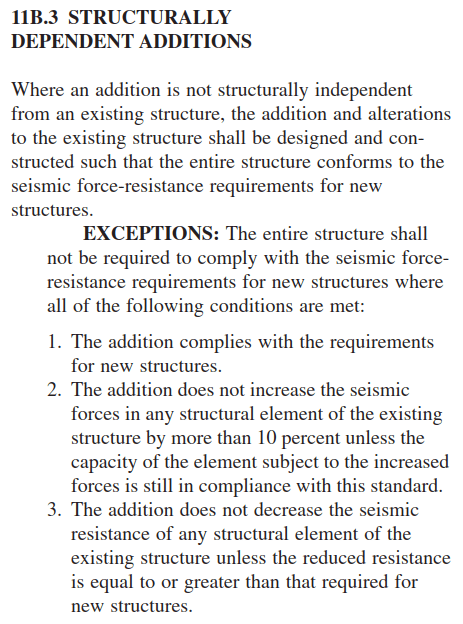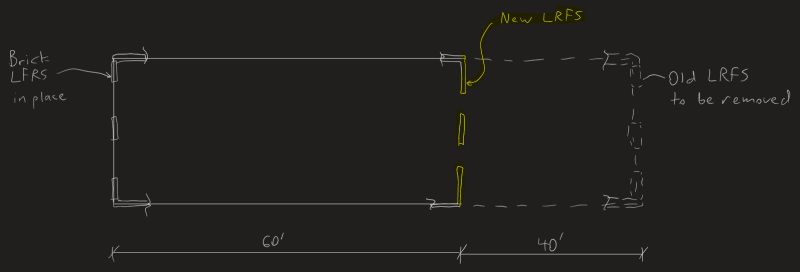milkshakelake
Structural
I have a 100' long building that's being shrunken down to 60' due to zoning issues. Generally when I extend a building, I know that ASCE 7 requirements must be met for the entire building for 10% or more addition. But if I shrink it, does that still apply? The goal is to keep the existing front facade system and not have to check or reinforce it, since the loading is decreasing. I am 99% sure the existing facade will not pass whether I keep the building or reduce the load, but we are making it better by reducing the load.
Reference: ASCE 7-10. The wording of the code makes it pretty unclear about how to approach this:

Reference: ASCE 7-10. The wording of the code makes it pretty unclear about how to approach this:


